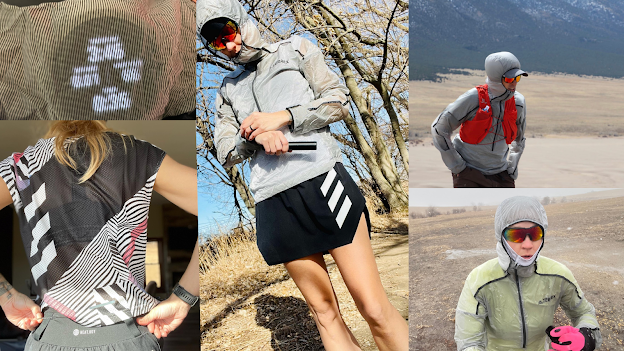Article by Bryan Lim, Mike Postaski, and Sam Winebaum
Mizuno Wave Horizon 6 ($170)
Introduction
Bryan: This is my second Mizuno review in as many years, of which the previous was the Wave Rider 25, which I was a massive fan of. In contrast to the sleek and versatile Wave Rider, the Horizon 6 is a maximal shoe that has ample cushioning and stability without the use of traditional posting. Similar to its predecessor, the Horizon 6 features the full length of its Mizuno Enerzy foam below the foot, but now also features a core of red. Mizuno Enerzy Core, which Mizuno claims to be 293% softer and provides 56% more rebound than their U4ic EVA foam a white layer of which is above the outsole in the picture below.
Note, U4ic when vocalized is ‘euphoric’! Maybe euphoric isn’t an appropriate term, but I was certainly excited to put them to the test. Read on to find out more!
Sam: I have never been a fan of big pronation control shoe, those massively posted, railed, plastic bits supported titans. While some may need that kind of support, I think they are often “over prescribed” and for some lead to other issues as the human foot naturally pronates to a certain extent.
So in a way I was dreading the Horizon 6, one of the most massive such shoes or really any shoe I have ever tested. But things evolve and my recent test of the similar class Diadora Vigore was a pleasant surprise for its clear support that wasn’t brutal in feel or overly prescriptive. And the very light Saucony Guide 15 with its subtle plastic arc support element was another pleasant surprise. The market for “control” shoes is clearly evolving to friendlier more adaptive approaches.
I was intrigued when I saw the specs for the Horizon 6 with its all foams and very elaborate layering Wave construction. It appeared to be an approach more continuous and “flowing” in support and without posts, plastic pieces or rails which are more sharply medial “point” support oriented. Of course, as always with Mizuno I expected that comfort, quality of construction and materials would be top notch.
Pros:
Surprising! Every run faster (relatively speaking), smoother, and more pleasant than weight and appearances would point to Sam/Mike P
Massively supportive and also adaptive with control not in the way for this neutral runner, a first in the category: Sam/Bryan
Ideal easy run, recovery run, long slow run option for any runner type Sam
Easy flow heel to midfoot transitions on the waves of foam, almost never the case with stability shoe for me: Sam
Smooth roll from lateral forefoot landings Mike P
Just soft enough rear cushion with no brick like feel medially or laterally: Sam/Mike P
Almost perfect true to size spacious (in a good way fit, upper security and comfort for the shoe type: Sam/Bryan/Mike P
Quality and expected long durability; Sam/Mike P
Cons:
Heavy at 11.6 oz /330g in US9 but for sure runs well, well below weight: Sam/Bryan/Mike P
Front outsole is somewhat overdone, thick, firm and slappy. Some longitudinal flex grooves?: Sam/Bryan
A touch of bunion area pressure Sam
Longish break in period Bryan/Sam
Not the most inspiring ride Bryan
Heel can feel blocky for forefoot/midfoot strikers Mike P
Stats
Estimated weight: men's oz 11.6 oz / 330g (US9)
Samples: men’s 11.2 oz / 317g (US8.5) 11.6 oz / 330g (US9) 11.9 oz / 336g (US10)
Stack Height: men’s 38mm heel / 30mm forefoot, 8 mm drop
Available June 1, $170



